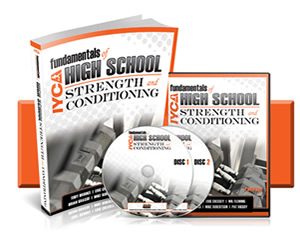Upper body pulling exercises are one of the most neglected movements in poorly designed programs, but they are absolutely vital to creating well-balanced athletes. It’s also common to see these exercises performed very poorly with very little attention given to correct posture, control, or form. Because many athletes enjoy pushing exercises so much (like bench press, push-ups, etc.), adequate pulling is necessary to provide balance. Many coaches adhere to the rule that the volume of pulling should match the volume of pushing, and some like to perform a greater amount of pulling. While vertical pulls like pull-ups, chin-ups, and pulldowns are all outstanding exercises, this article will focus on horizontal pulls or rows.
Pulling exercises can be done utilizing a variety of equipment, and changing up the implement can often keep training more interesting and engaging. The rest of this article will focus on three pulling variations that I enjoy including in my programming.
The first variation is fairly common, but a staple in any rowing progression – the prone dumbbell row. This is a great exercise because it allows for the athlete to focus on the important upper body postural components of rowing. Telling the athlete to maintain an upright chest on the bench allows for them to naturally eliminate the use of the upper trap/shoulder. This allows athletes to squeeze the shoulder blades when pulling, which is difficult for many athletes to do when learning how to pull. Ensure your athlete is reaching a full range of motion in these exercises, allowing them to protract and retract the scapulae while rowing. This often needs to be addressed separately with specific scapular retraction reps/exercises in order to help athletes learn how to control this movement. Cue “elbows back” and rowing “low to the pockets” to again, make sure that they are utilizing the proper musculature. You can also place your hand between the scapulae and cue the athlete to squeeze your hand with their shoulder blades as they lift the weight. Many athletes will actually push their shoulders forward as they row, so time must be spent on this.
Pausing at the top of each rep is also difficult for many athletes. This obviously makes the movement more challenging, so many athletes take the easy road and neglect the pause. This is particularly true when heavier weights are used. Pausing at the top allows you to focus on scapular retraction and builds strength at the peak of the contraction.
The second variation I include in my top 3 pulling exercises is the single-arm ring row. This is a challenging exercise, especially with those lacking a lot of core stability or upper body strength. This is a progression of the normal ring or TRX row. Begin by making sure the athlete has adequate core and upper body stability and strength to perform the exercise. You can make this more challenging by inverting it.
The last variation I include is the half kneeling single arm banded row. This can also be done with the athlete being directly under the band, gbut can also be done with the band attached at a higher angle to create a more vertical pull compared to the variation shown. The half-kneeling position challenges posture and core stability in addition to performing the rowing exercise.
Using just dumbbells, bands, and rings allows you to perform these exercises in most settings, and they give you enough variety to keep athletes interested. I also like using these variations to space out larger groups when super-setting exercises. For example, you may super-set the banded row with an upper-body pushing exercise or a squat. You can set up the band away from the other exercise to create space and to keep traffic moving.
Try these three pulling exercises in your programs to help create balanced upper-body strength and use them as part of a progression to more difficult exercises.
 Jordan Tingman – CSCS*, USAW L1, ACE CPT, CFL1 is a graduate of Washington State University with a B.S. in Sports Science with a Minor in Strength and Conditioning. She completed internships with the strength & conditioning programs at both Washington State University and Ohio State University, a Graduate Assistant S & C Coach at Eastern Washington University, and is currently working at D1 Sports Performance in Boise, ID.
Jordan Tingman – CSCS*, USAW L1, ACE CPT, CFL1 is a graduate of Washington State University with a B.S. in Sports Science with a Minor in Strength and Conditioning. She completed internships with the strength & conditioning programs at both Washington State University and Ohio State University, a Graduate Assistant S & C Coach at Eastern Washington University, and is currently working at D1 Sports Performance in Boise, ID.
The IYCA High School Strength & Conditioning Specialist is the only certification created specifically for coaches training high school athletes. The course includes several hours of video instruction (including a complete Olympic lifting instructor course) and two textbooks with contributions from some of the top strength and conditioning coaches in America. Click on the image below to learn more about how to become a certified high school strength & conditioning coach.

